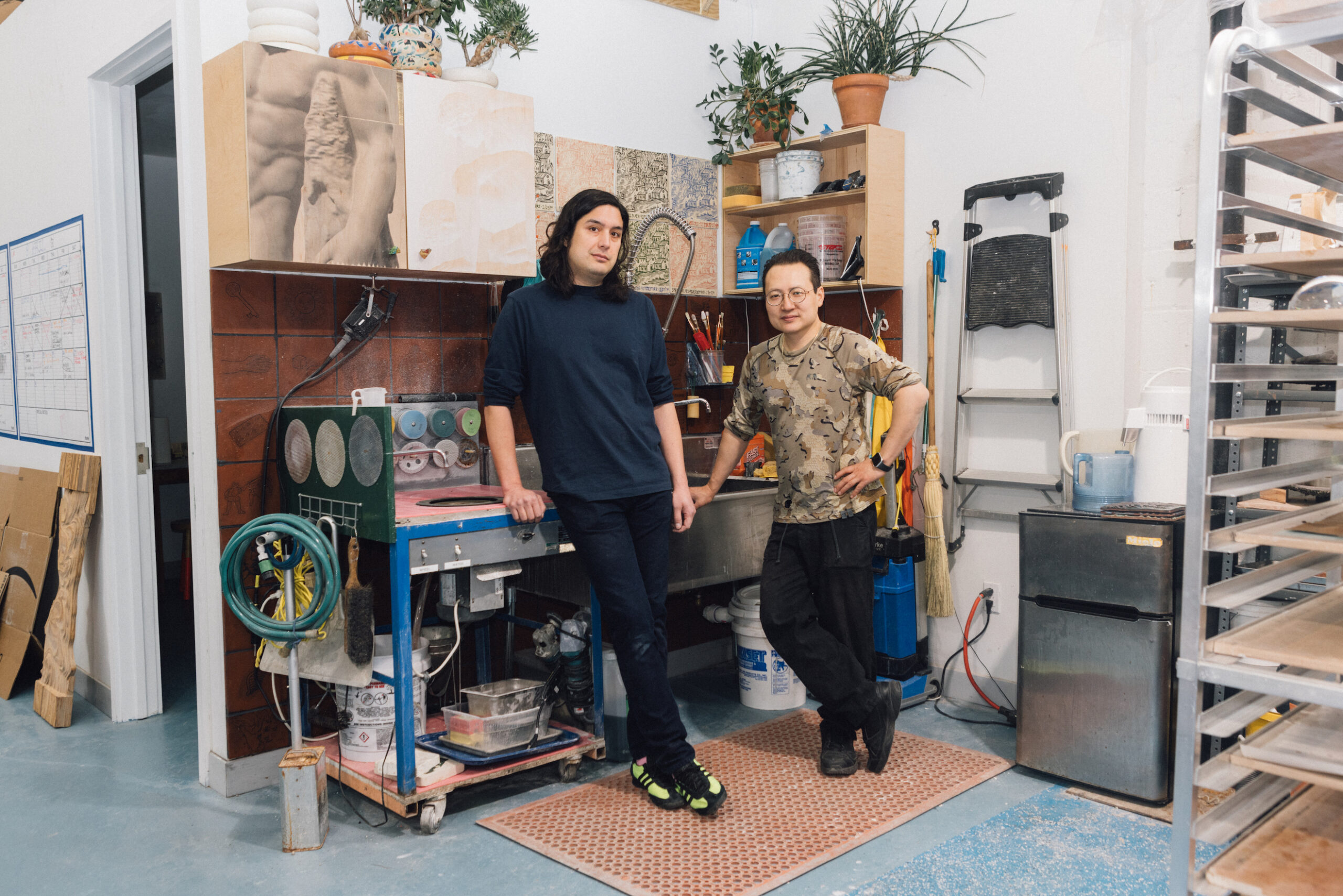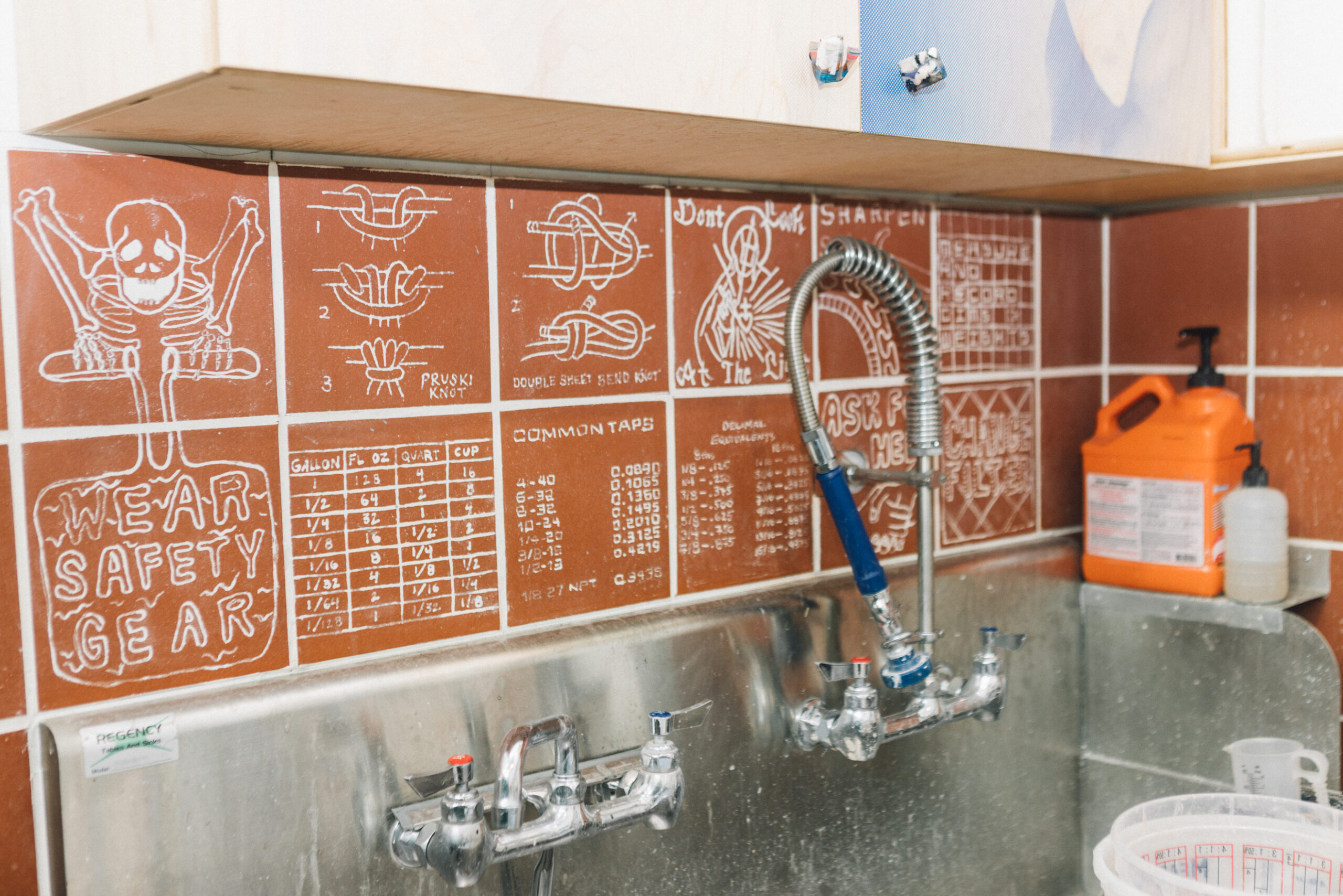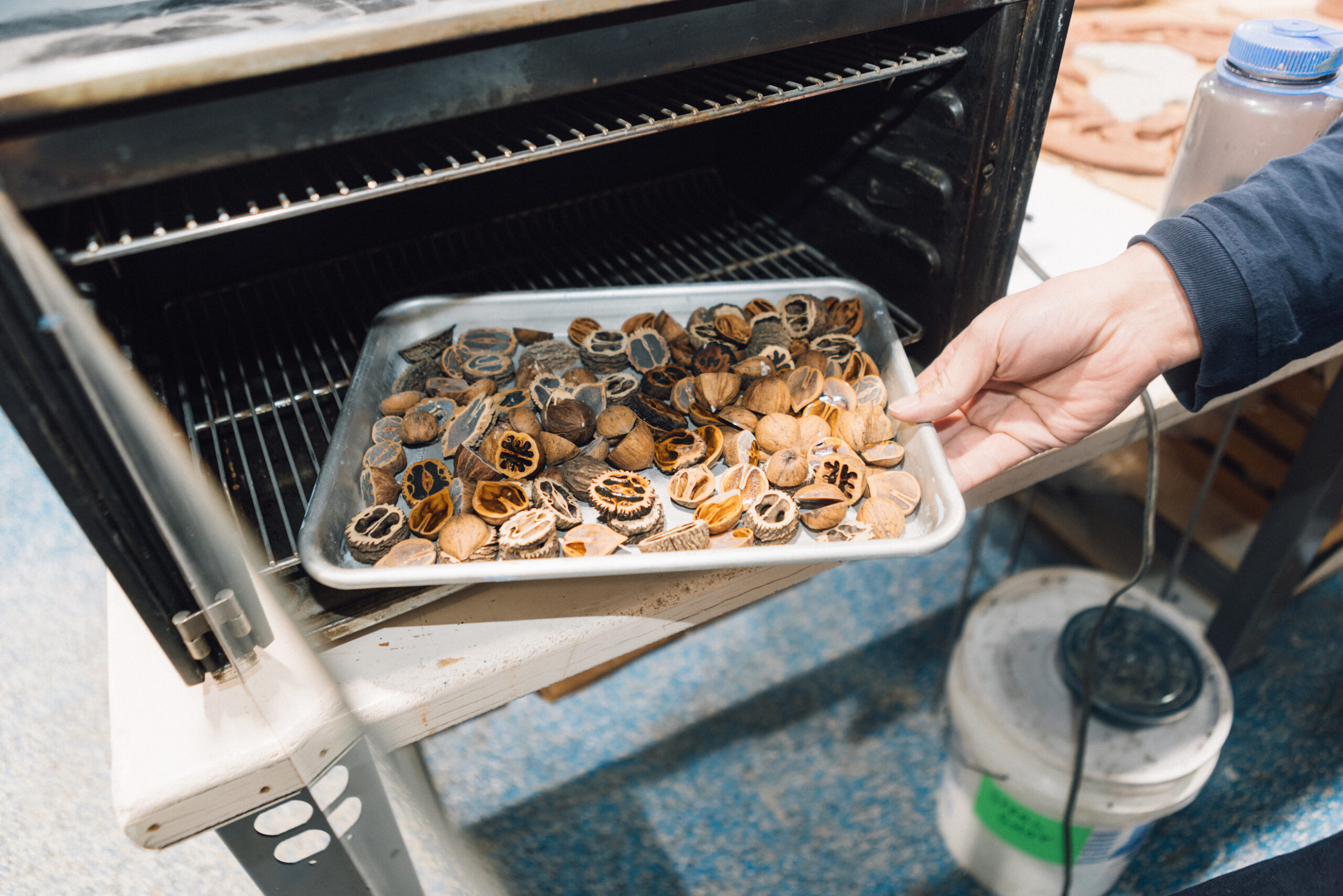A year apart in their industrial design studies, Chen Chen and Kai Williams became friends at Pratt but came together in their work a few years post-graduation, going on to form their eponymous design studio in 2011. It wasn’t a shared approach that ultimately forged their creative partnership, but contrasts—“our sensibilities are quite different, and that’s what makes the work more interesting,” they said in an interview with Prattfolio, started jointly over email and continued in their Brooklyn studio last spring.
Those differences have brought to life a lineage of objects, furnishings, and one-of-a-kind works that revel in material experimentation, unexpected combinations, and the beauty of process—from their early Cold Cuts Coasters, made by bundling tree branches, rope, netting, and other odds and ends in a resin-soaked casing and slicing cross-sectional discs, to their recent Sacred Tree collection of furniture and lighting, which takes notes from nature in its forms and its materials, like bisected walnuts, and is assembled by hand in studio. (With more walnut explorations on the way.)
The following Q&A has been edited and condensed.
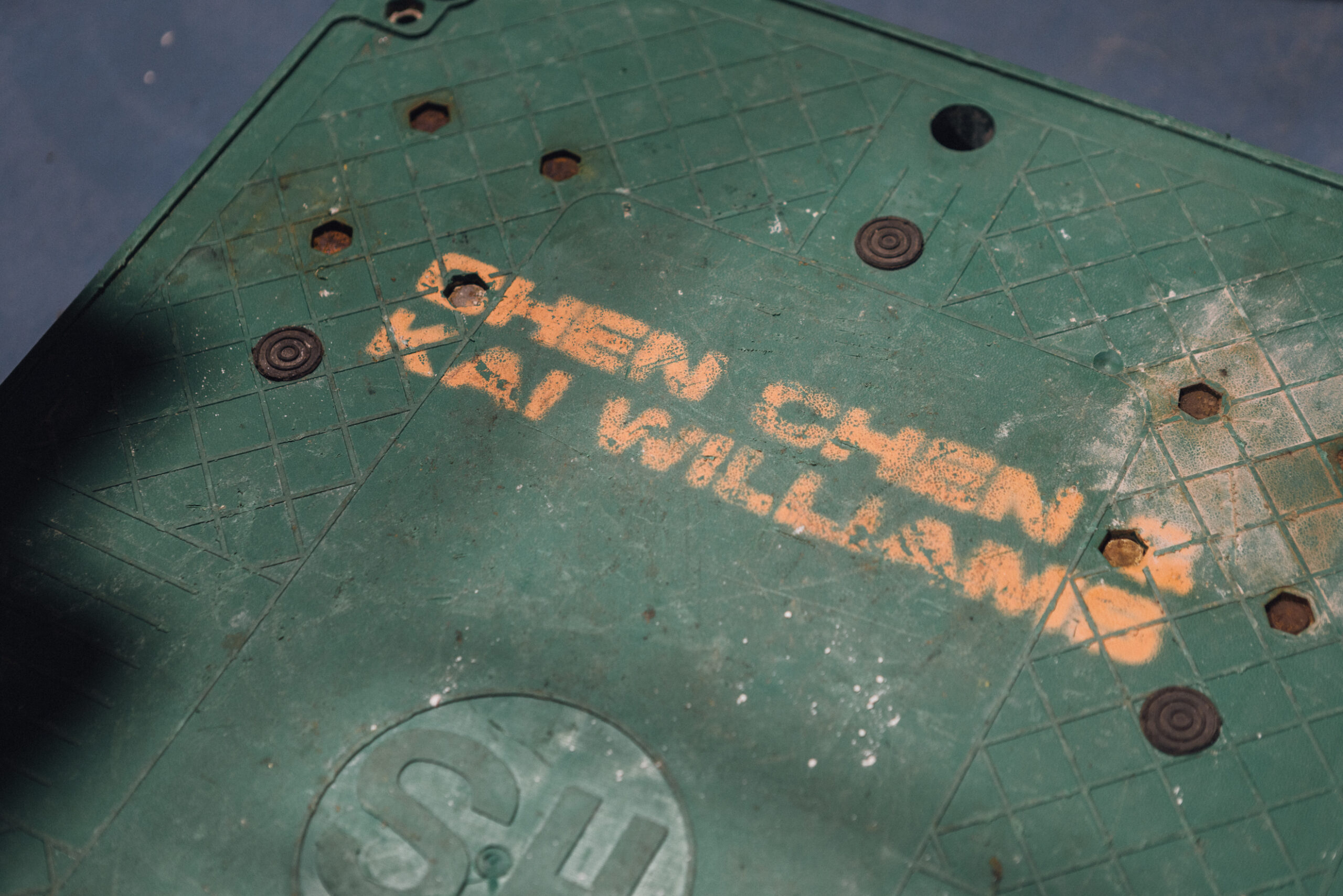
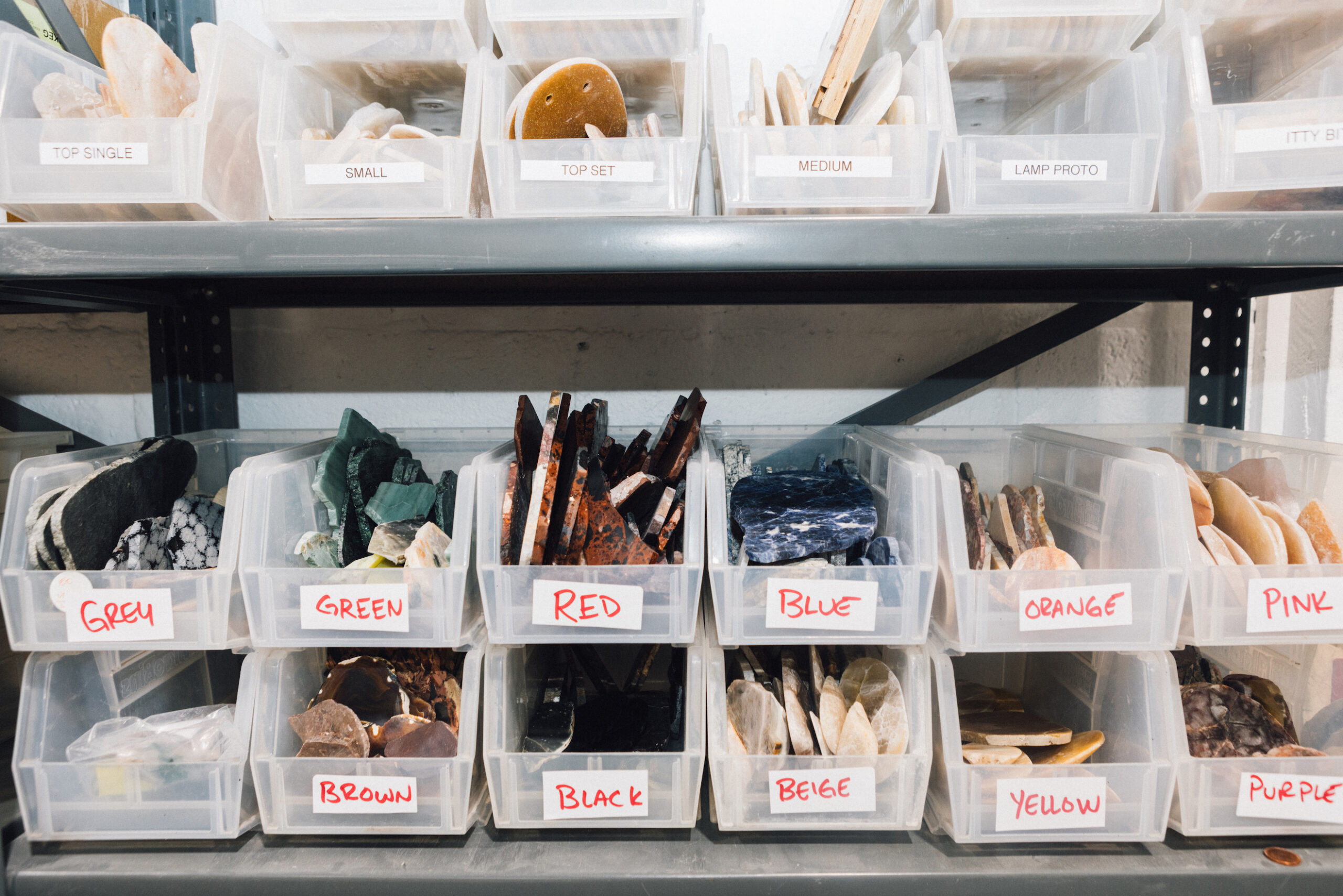
You’ve mentioned the differences in your creative sensibilities—how does that influence the work?
Chen Chen: There’s a little bit of tension pushing the work forward. If you’re on the same page already, then maybe the first draft doesn’t get revised.
Kai Williams: I would say that there are particular differences. I feel like I under-structure, and Chen overstructures, which maybe is [also] in our language: I under-explain and Chen overexplains.
CC: We used to argue a lot about whether or not there should be two more screws in something. I think having that debate really helps push things forward.
KW: We each take on different areas of work. Chen does more of the wood and stone, and I do more of the metal and electronics. Naturally, you find your own specialties.
CC: It’s not like we couldn’t do all that stuff, but I think when you’re in a partnership, it allows part of you to atrophy and part of you to develop deeper, because it’s just easier to specialize.
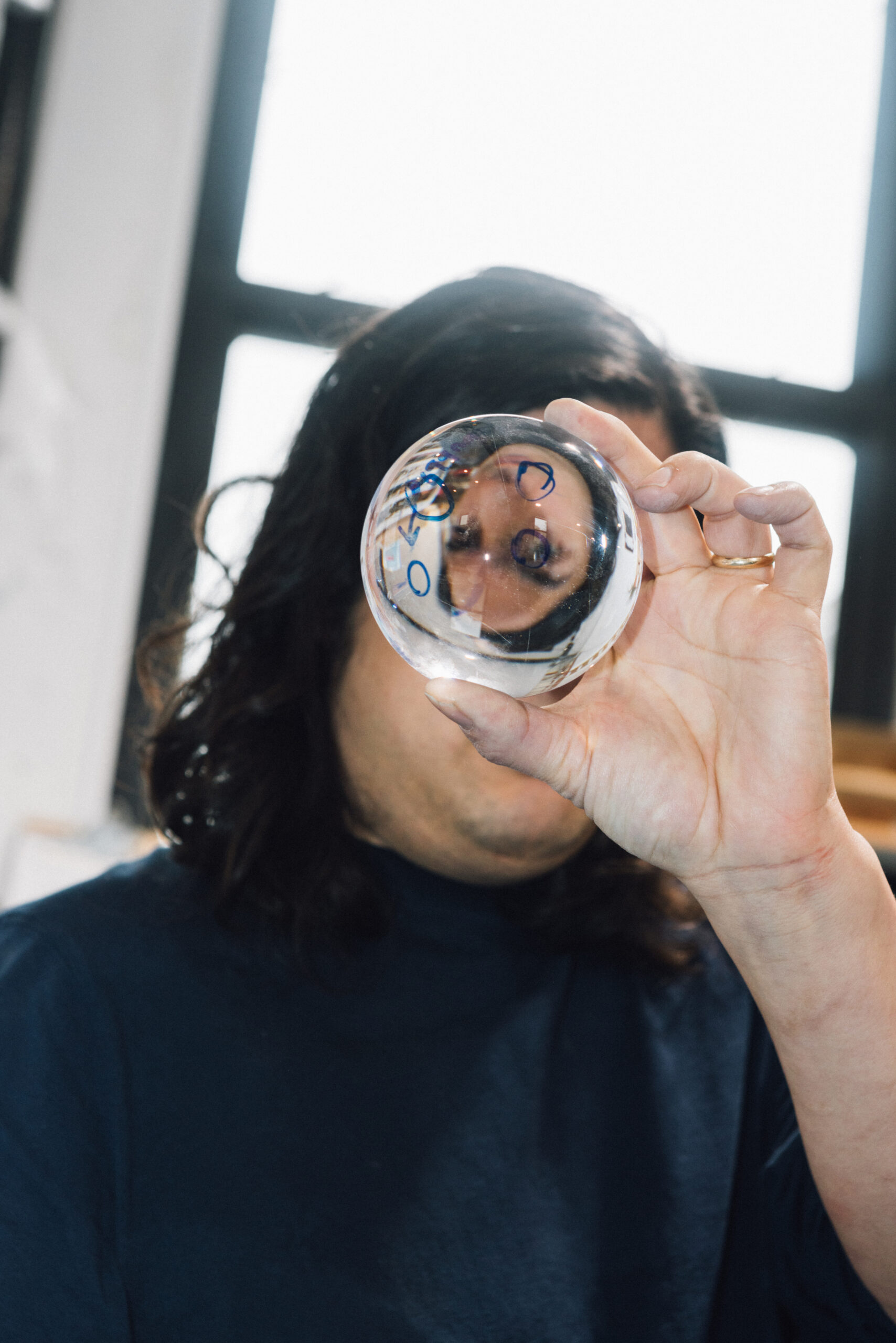
How would you describe your roles in your studio?
CC & KW: We make creative decisions together, but in terms of the business, Chen is more customer facing and Kai is more vendor facing.
How do you support each other through problems and creative challenges?
CC & KW: We normally work independently, with one person taking the lead on certain projects or we divide up the work and then combine it together. This means there’s always a fresh set of eyes that can look at a problem from a more removed perspective.
CC: For example, the knife [Sidewinder Knife, a collaboration with Craighill]—that’s purely Kai. Kai is less likely to ask for help, so he was developing this thing on his own for a long time. And I was talking to Craighill. I was like, Can you guys make this? Even though there was very little of my design input in there, I used my natural inclination to reach out to people that we know to pick their brains about stuff. So I think that’s how it ended up being a product they produced.
How did forming a creative community (at Pratt and beyond) influence your practice as you were starting out?
CC & KW: From Pratt, we know Greg Buntain, Ian Collings, Pat Kim, Brian Persico, and Brendan Timmins, and we all specialized in different aspects of industrial design. We’re constantly asking each other for advice on how things are best constructed. In the beginning when we didn’t have any money, we’d be pitching in together to do fairs. Now we often share vendors for manufacturing products.
What’s a lesson learned at Pratt that’s stayed with you?
CC: In sophomore-year studio, Professor Andy Roberto said that industrial design was too broad of a field for the school to teach you to be an expert in anything. What he was trying to teach was how to think and become an expert on your own in whatever project you were taking on.
What piece of advice would you give to current students about finding their people?
CC & KW: Just as important as making connections with people within your field is making connections with people outside your field. Graphic designers, photographers, writers are all important people who can help you with something you’re not trained to do.
What’s going on in the studio right now?
CC: A lot of the ceramic stuff is beginning, and a lot of these products are based around the walnut as a seed. We see it in furniture—obviously in the wood, but the seed itself is also quite beautiful, and there’s an opportunity to incorporate it into a piece of furniture. We’ve been wanting to get back to experimenting more and making more. A lot of the products we’ve made in the past have been process based. There are more deliberate choices in this . . . it’s figurative and it’s a new direction for us. [The walnut seeds] are such a beautiful material, and something that gets thrown away.
KW: It’s also part of the story of the wood, you know. I don’t think a lot of people think about walnut wood and walnut seed at the same time. Until you put them right in front of you, they’re somehow not thought of in the same sentence.![]()
Additional reporting by Nikolas Slackman. Photos by Dahlia Dandashi, at the Chen Chen & Kai Williams studio in Brooklyn
